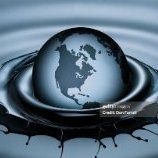Hydro Electricity In Thailand - What Went Wrong?
-
Recently Browsing 0 members
- No registered users viewing this page.
-
Topics
-
-
Popular Contributors
-
-
Latest posts...
-
105
UK Mohammed Fahir Amaaz & Muhammad Amaad on Trial over Manchester Airport Clash
Get out of nothing, all races are muslims so how can a mention of it be 'racist' it's a religion -
6
USA New Video Footage Chilling School Attack Foiled by Teens Amid Alleged Honor Killing Attempt
"Diversity is strength" -
105
UK Mohammed Fahir Amaaz & Muhammad Amaad on Trial over Manchester Airport Clash
Islam is not a race - Racism does not come into the equation. If my grannie had balls, she would have been me grandad. If doesn't come into the equation either. Take your strawmen,roll them up in a Pally flag and smoke them.- 1
-

-
14
Life Coaches and Other Professional Time Wasters ~ Who’s Buyin’ This Minging Rubbish?
I don't read them, don't have to to know they are artificially produced just to create traffic -
14
Life Coaches and Other Professional Time Wasters ~ Who’s Buyin’ This Minging Rubbish?
You say this about all of Lewis’s stories. Yet you continue to read each new one. Why? Why, if you don’t like them, do you keep reading them? Certainly it isn’t just so you can complain. No one in their right mind keeps doing things that they don’t like. Oh… wait. -
72
Economy Trump Dishes Out 36% Tariffs in Shock Move Against Thailand
It looks like japan is ready to play ball, their tariffs are delayed. Unfortunately thailand is busy twiddling their thumbs
-
-
Popular in The Pub














Recommended Posts
Create an account or sign in to comment
You need to be a member in order to leave a comment
Create an account
Sign up for a new account in our community. It's easy!
Register a new accountSign in
Already have an account? Sign in here.
Sign In Now